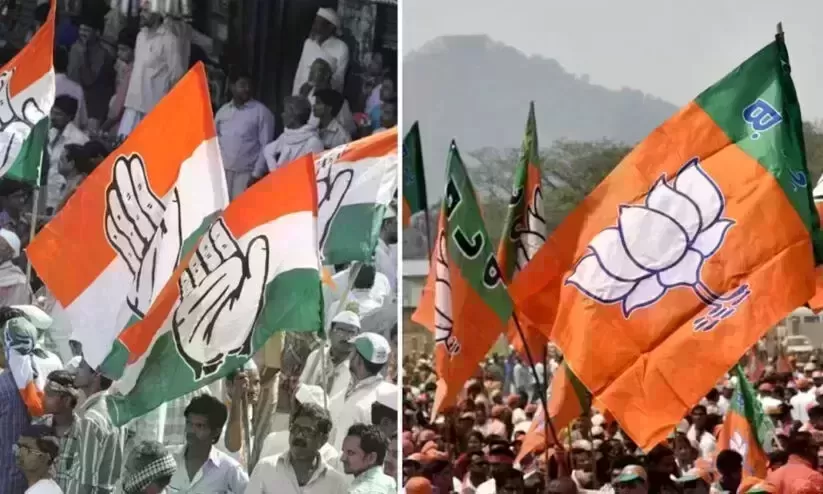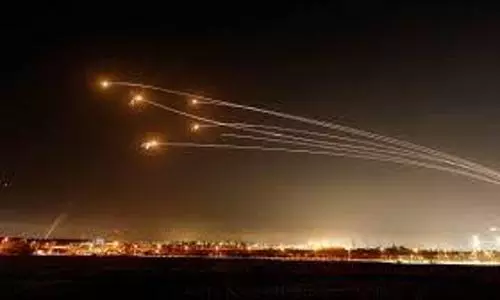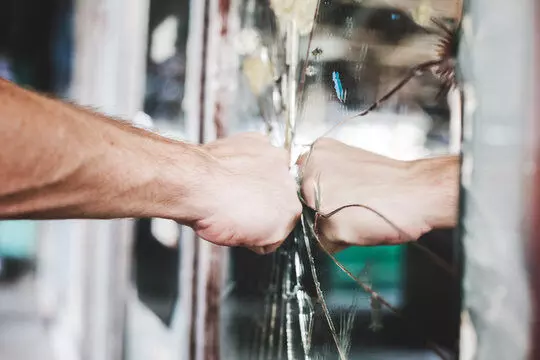
Govt clamp down on Media: breaking the mirror
text_fieldsMedia as they say is the mirror of any democratically elected government in the world and is seen as the fourth estate with the privilege of correcting governance by bureaucracy and political parties. The media also act as a tool to inform the public of the shortfalls of the government as well as the rights of people.
To make it possible, the media should be left free as long as it functions as envisioned. It is not wrong if the media is also called the protector of democratic values because of its direct conversation with the public, though there are constitutional institutions like the Supreme Court and legislative systems.
The rationale for the importance given to media is that in a democracy voting is the weapon with which the public decides who their serving government should be. For making that choice, they need to be sufficiently informed of the different aspects of government.
But to play its role, whether at macro or micro level, media need to be free from external influence or pressure, otherwise called independence of the media. However, governments will bring laws and policies to limit the media’s hold over the public in order to hold its sway over the public.
Media Freedom in India
Media in India, despite its flaws in its operational levels mostly remains true to its conceived functions and ethics. The presence of press freedom in India can be said to be moderate when compared to authoritarian regimes in the world but how far the word ‘moderate’ is suitable when it comes to free speech is debatable. India is projected as the world’s largest democracy but democratic values, critics allege, are often butchered by the hands of the BJP-led government at the Centre. Critics cite the enactment of laws to curb free speech as an example of the trampling of democratic values and the government's various acts to strangle media entities.
Most of these laws, which in effect choked the natural breath of media, came into effect since the Narendra Modi-led government took power in 2014. A chronological analysis of events that eventually brought him to power would show how the ardent IT cells controlled by the right-wing groups and news channels in the country disseminated content that is divisive, offensive, blasphemous and hateful against religious minorities in the country.
It would be wrong to say media curbs are a new thing in India. There are instances of previous governments led by Congress also having introduced laws and policies to control media, but the amount of power used by the BJP government to silence the media and free speech has no parallels with the previous governments.
Journalists have alleged that they have been subjected to various kinds of gagging ever since Modi came to power in 2014 as part of a systematic silencing of critical reporting. Journalists would be labelled anti-national for being critical of the government.
Though there are numerous news outlets including newspapers, magazines, digital media and television news channels in the country, journalists allege that many mainstream news publications and channels, owned by corporate business figures linked to the BJP government, refuse to publish stories that criticise Modi, the BJP or those close to the ruling establishment. However, the government keeps denying any wrongdoing on its part or any attempt to zip the media's mouth.
India has seen, in recent times, the government introducing laws, seen by critics as draconian, to curb media freedom. The country has also seen some of the major media houses and online media portals facing the application of these laws for being critical of the government.
All of this means that India, the world’s largest democracy, scores rather poorly when it comes to press freedom. Reporters Without Borders ranks it at 150 out of 180 countries. In its ‘2020 Country Reports on Human Rights Practices’, the US Department of State pointed out several significant human rights issues in India, including restrictions on freedom of expression and the press.
Ways of the government tightening grip over media
On the one hand, the BJP government is regulating free speech by introducing laws, and on the other, through its cronies taking control of media houses critical of the government. A certain section of the English and Hindi television news channels and newspapers are known to be owned by people close to the BJP government. The recent take-over of the NDTV news channel by a conglomerate led by billionaire Gautam Adani shows how corporate power plays a significant role in media control in favour of the government.
There are stringent laws in the country to control the television channels where the Union government can suspend them at will or even refuse to extend their registration or approve a new network in the first place if they are found not toeing the line of government policies. The suspension of broadcasting of MediaOne, a Malayalam news channel, without providing any reasons is one of the examples of how the government is trying to muzzle press freedom and dissent. The extended blocking of news channels in Jammu & Kashmir preceding and after the Centre's drastic change of status of the state in August 2019 is a more glaring example of such action.
The latest clamp-down on the BBC also proves how the government uses its systems to pressure the media to be servile to it. Weeks after the BBC aired a documentary based on a British intelligence report on the Gujarat riots that happened two decades ago - when the present Prime Minister Narendra Modi was the Chief Minister of the state - the Income Tax department held a two-day raid in the BBC’s offices in Delhi and Mumbai. The BJP and the Union government, by way of justification, called the BBC’s documentary colonial propaganda to tarnish India’s image.
Similar raids were also faced by digital websites such as The Wire and magazines such as Caravan, apart from journalists. In one instance, journalist and editor of fact-checker website AltNews, Mohammad Zubair was put in prison for about two months under the pretext of a tweet he had posted years ago; and journalist from Kerala, Siddique Kappan had to spend two years in the UP jail, having been detained under terrorism laws as he was on his way to report on a high-profile gang-rape case in UP’s Hathras, where a Dalit girl was found murdered after rape.
While Zubair was acquitted of the charges, Kappan, though granted bail recently, has years ahead to be cleared of guilt by the judiciary. The US Human Rights report says that sedition and criminal defamation laws in India were sometimes used to prosecute citizens who criticised government officials or state policies.
"In certain cases, local authorities arrested or filed cases against individuals under laws against hate speech for expressions of political views," said the report. To highlight this, the report quoted several instances such as the contempt of court case against senior advocate Prashant Bhushan and the West Bengal government blocking the Calcutta News broadcast in May 2020.
All these are apart from arrests and charges on individuals for posting content branded as offensive or derogatory on social media, the report said. The report also mentions threats to internet freedom through the government asking for more user data from internet companies; the frequency of internet shutdowns has also been on the rise.
Besides, several journalists and media platforms are reported to have been put under surveillance by the government using software like the Israeli-made Pegasus in violation of people's privacy, posing a serious threat to press freedom.
The government would not like to see the naked truths; it would rather break the mirror that shows them.
























